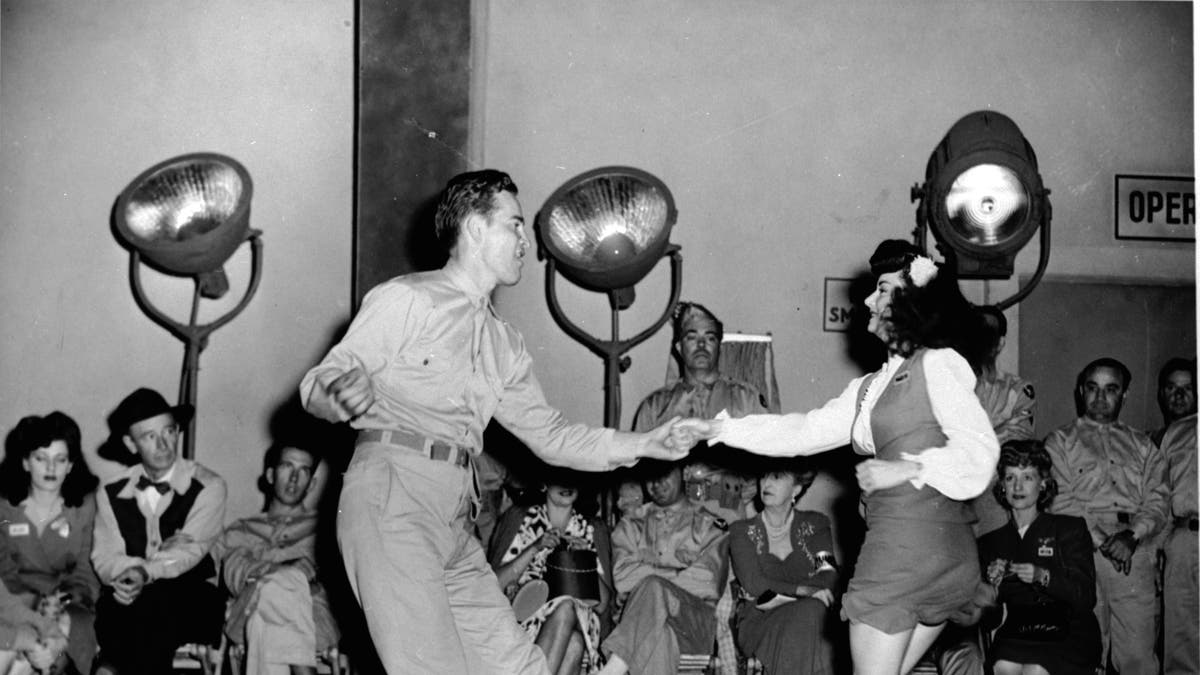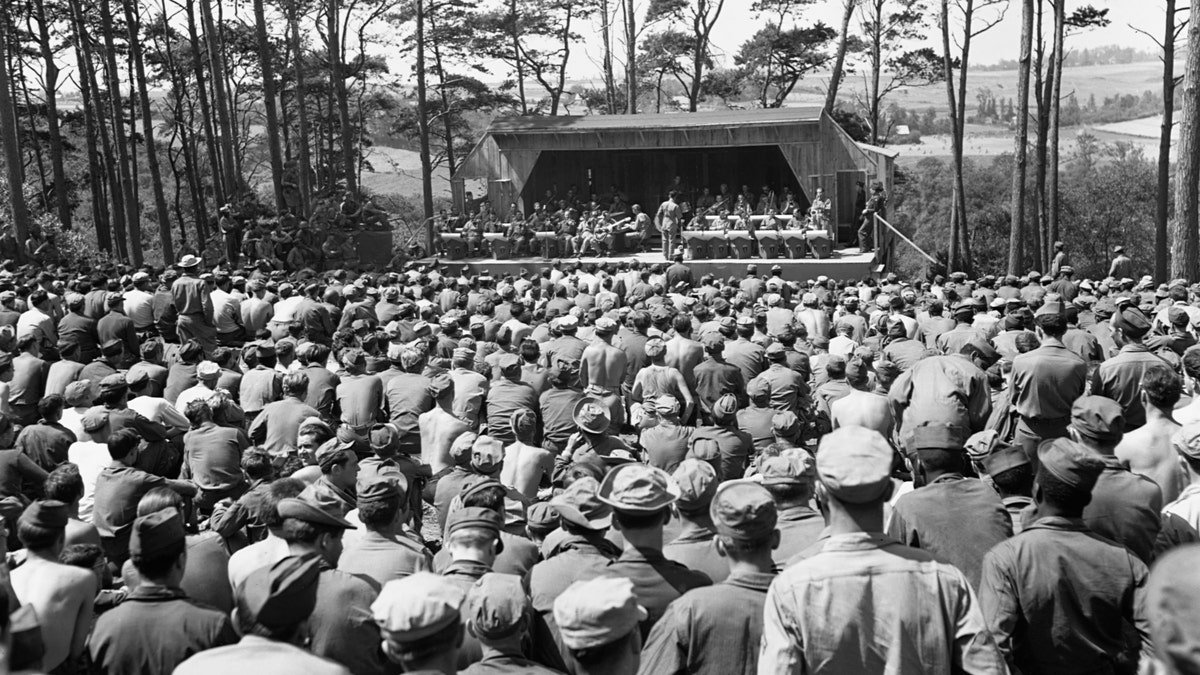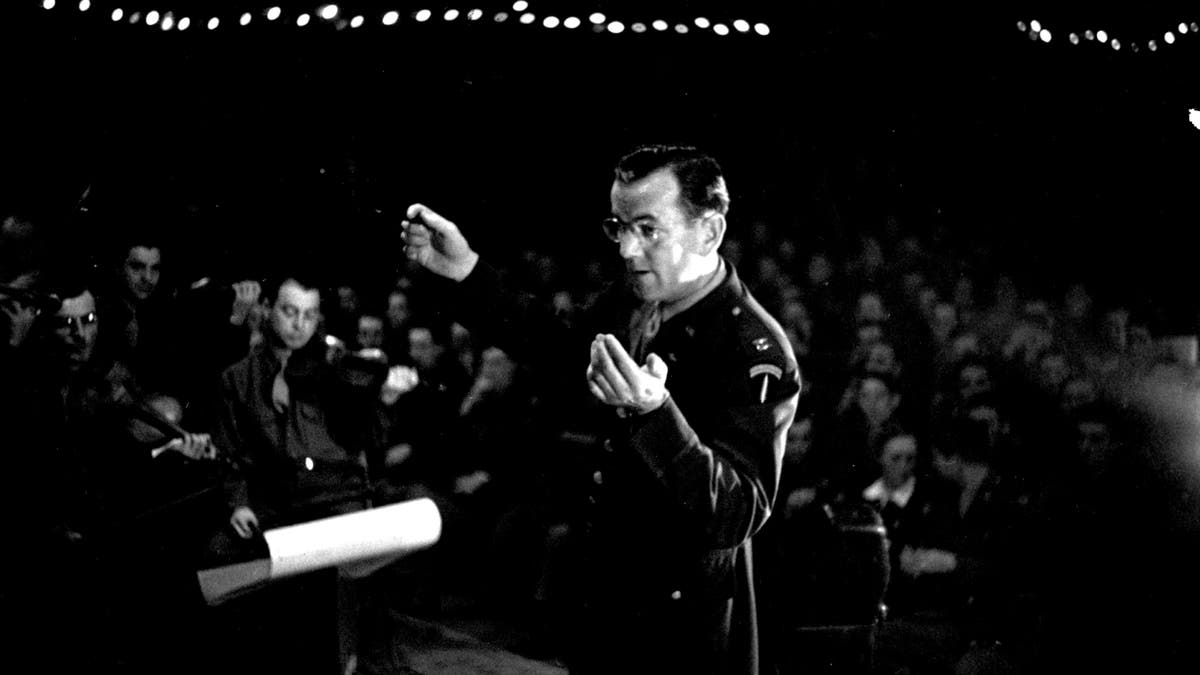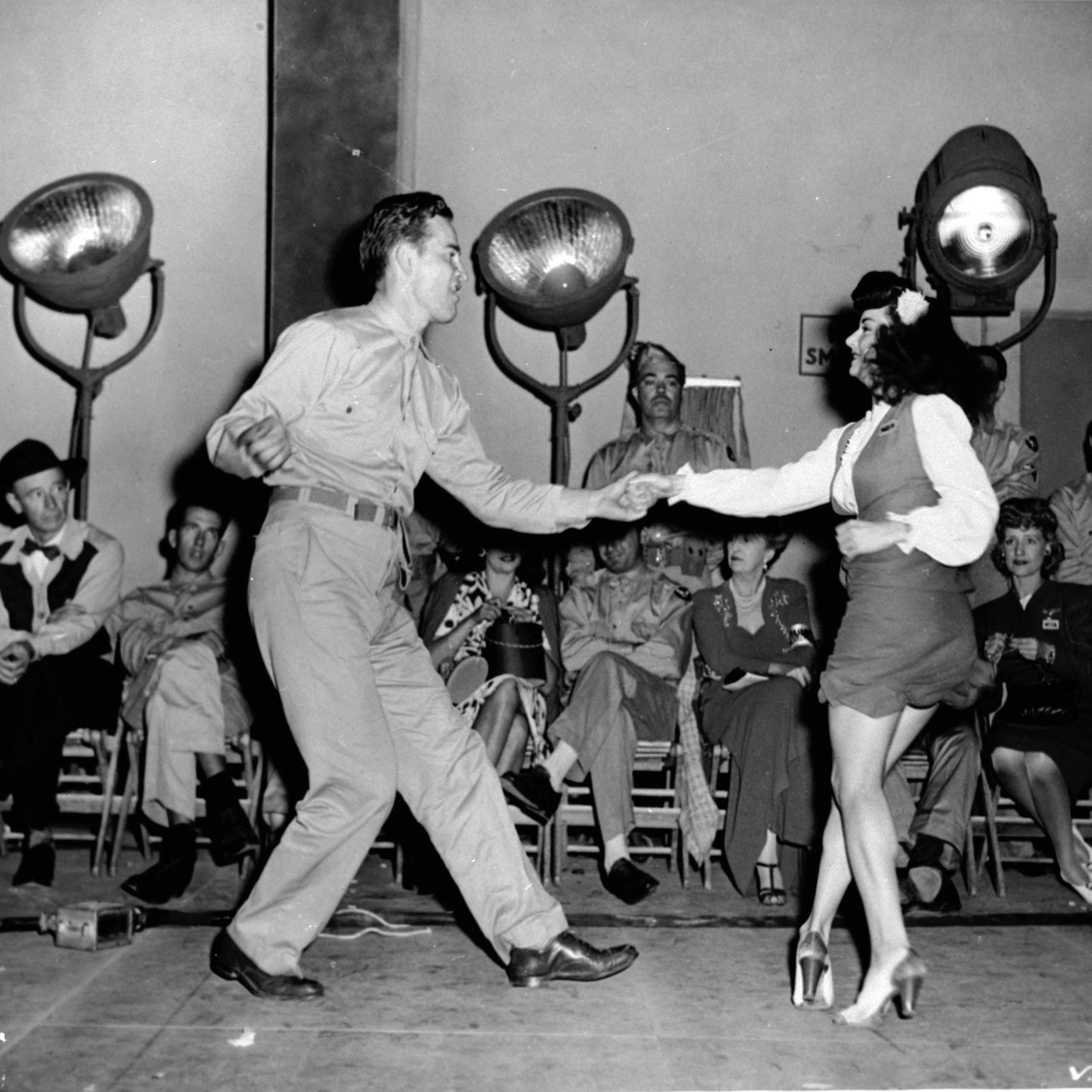Glenn Miller and His Orchestra topped the American pop charts with the exuberant “In the Mood” as war raged abroad on this day in history, February 10, 1940.
His most famous song, along with other iconic hits, made Miller the most important bandleader of his era and provided the vibrant soundtrack of the Greatest Generation during World War II.
“Miller is the sound of guys fighting overseas, especially since he went overseas himself,” Jordan Runtagh, host and producer of the pop culture podcast “Too Much Information” on iHeartRadio, told Fox News Digital.
ON THIS DAY IN HISTORY, FEBRUARY 9, 1942, THE FEDERALS ENACT DST IN THE DARKEST HOURS OF WORLD WAR II
“'In the Mood' is a song that transcends music. If you want to evoke that era, if you want to hear the sound of America in World War II, play that song.”
“In the Mood” and other Miller songs were also big hits in the United Kingdom during the war years.
Circa 1942: American musician and bandleader Glenn Miller (1904-1944) in US Air Force uniform. (Getty Images)
Miller died while serving in the US Army in a plane crash while flying from London to newly liberated Paris on December 15, 1944. He was 40 years old.
His body was never found, fueling conspiracy theories that endure to this day.
Miller's wartime death cemented his eternal connection to the era.
“Miller is the sound of guys fighting overseas.” —Jordan Runtagh, iHeartRadio
“The band's bespectacled, tight-lipped leader looked more like the leader of a choir than a swing band, but his keen arranging skills and ear for melody ensured that at least every other tune he recorded sounded like the anthem of the time,” wrote AllAboutJazz. .com in a review of Miller and “In the Mood.”
“He was the most popular conductor of his time.”
The infectious “In the Mood” features a lush jazz clarinet and tenor sax duet, jitterbug rhythm, and instantly recognizable opening notes.
It is recorded in the annals of Americana.
Among other acclaim, “In the Mood” was added to the Library of Congress's National Recording Registry in 2004 for songs that are “culturally, historically, or aesthetically significant, and/or inform or reflect life in the United States.”

Marjorie Ochs, the only girl in the “I Sustain The Wings” program, presented by the Army Forces Technical Training Command each week via a National Radio connection, goes over the script with Capt. Glenn Miller during rehearsal to find a way to correlate music with theater, June 6, 1943, New Haven, Connecticut. (Getty Images)
“In the Mood” today has 80 million streams on Spotify, even though it was a hit almost 70 years before the medium was founded.
Miller and His Orchestra enjoyed great popularity during the war years with other hits such as “Moonlight Serenade” and “Tuxedo Junction.”
MEET THE AMERICAN WHO INSPIRED THE NATION IN TWO WORLD WARS: CHRISTIAN SOLDIER SGT. ALVIN YORK
Another of his wartime recordings, “Chattanooga Choo Choo,” was the first gold record in American music history.
A vinyl record of the song was painted gold to celebrate its success as a publicity stunt, also on February 10, 1942.
“'In the Mood' today has 80 million streams on Spotify.”
“The record label, RCA Victor, celebrated by presenting Glenn Miller with a trophy during a live radio broadcast,” NPR wrote online in 2017, noting that the song sold an incredible 1.2 million copies.
“Miller's honor started a self-congratulatory tradition of labels rewarding their own artists with framed gold records.”

An American serviceman dancing jitterbug with a young woman in 1944. Americans danced to Glenn Miller during the war years. (Keystone Features/Getty Images)
The name “gold record” stuck and was adopted as the official industry standard for 500,000 records sold in 1958.
Miller's energetic horns provided a soundtrack of positivity that propelled the American people forward despite the enormous challenges and deaths of World War II.
“In the Mood” remains their most popular song.
In many ways, it was the sound of America's heartbeat as its people fought for freedom across two vast oceans.

U.S. soldiers listen to a Saturday afternoon jam session by Glenn Miller's Band at Camp Herbert Tareyton, near Le Havre, France. (Photo by © CORBIS/Corbis via Getty Images)
Alton Glenn Miller was born in Clarinda, Iowa, on March 1, 1904, but was raised in Missouri and Nebraska before graduating from high school in Fort Morgan, Colorado, in 1921.
He briefly studied music at the University of Colorado.
He sought success in the music industry first in Los Angeles before finding it in New York City, working for big band leader Tommy Dorsey before forming his own company.
Miller became a sensation in 1939 by conducting a concert at the Glen Island Casino in New Rochelle, New York, which was broadcast on two national networks.
CLICK HERE TO SUBSCRIBE TO OUR LIFESTYLE NEWSLETTER
Miller was enlisted by Uncle Sam in the war effort in 1942. He was an active U.S. Army Air Forces officer, primarily entertaining troops, when he died during the war.
“Almost from the moment the world learned that Miller was missing, conspiracy theories began to rise like puffs of smoke from the Chattanooga Choo Choo,” the University of Colorado School of Music wrote in 2014 about one of its “students.” most illustrious”.

August 1944: Band leader Glenn Miller (1904-1944), conducting an ENSA concert during World War II. Original. (Felix Man/Image Release/Hulton Archive/Getty Images)
Among the conspiracies: Miller died of a heart attack during a tryst at a Paris brothel, or was murdered after secretly negotiating a truce with Hitler in Berlin.
Miller's plane, the story goes, probably crashed when the fuel lines froze over the icy English Channel.
ON THIS DAY IN HISTORY, JANUARY 27, 1943, THE US EIGHTH AIR FORCE LAUNCHES A BOMBING OFFENSIVE ON NAZI GERMANY
“The years have not diminished the aura of eminence that Glenn Miller's band achieved here and abroad,” wrote musician and entertainment executive Mort Goode in the liner notes to a 1974 two-disc vinyl compilation, “The Complete “Glenn Miller.”
CLICK HERE TO GET THE FOX NEWS APP
“'In the Mood' was clear evidence of Glenn Miller's sound, savvy business sense. The song and arrangement were first given to Artie Shaw… Miller cut it judiciously, built on the riff and turned it into a masterpiece of all times”.
For more lifestyle articles, visit www.foxnews.com/lifestyle.












